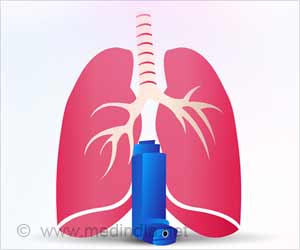It is the fourth day in a row with such bad air.Due to bad air, “there has been a significant increase in the number of patients coming to the OPD as well as getting admitted with respiratory diseases,” Vikas Maurya, Director and Head of the Department, Pulmonology, Fortis Hospital, Shalimar Bagh, told IANS.
“In the last three to four weeks, there has been a 20-30 percent rise in patients coming with recurrent
and upper respiratory tract infections. Some patients also are coming with lower respiratory infections like
(COPD) attacks, exacerbations are also rising. A majority of these patients are the elderly and children,” the doctor said.
As per SAFAR data, at Pusa and Delhi University, PM 2.5 was recorded at 311 and 391 in the ‘very poor’ category. At Lodhi Road, the PM 2.5 concentration was at 317 in the ‘very poor’ category while the PM 10 stood at 219, also in the ‘poor’ category. At IIT Delhi station, the PM 2.5 was at 329, ‘very poor’ category, while PM 10 reached 188, in the ‘moderate’ category.
Advertisement
Nikhil Modi, Consultant, Respiratory and Critical Care Medicine, Indraprastha Apollo Hospitals, told IANS that “fine particulate matter, notably PM2.5, penetrates deep into the lungs, causing inflammation, aggravating asthma, and leading to COPD”.
“Children and the elderly are particularly vulnerable, as prolonged exposure can stunt lung development in youngsters and intensify pre-existing conditions in older individuals. Moreover, the increased prevalence of respiratory infections, such as bronchitis and pneumonia, compounds the health burden on the population,” the doctor said.Meanwhile, Delhi Environment Minister Gopal Rai said on Wednesday that the next 15-20 days would be critical in the context of AQI.
Impact of Seasonal Changes and Pollution Control Efforts in Delhi
“From November 1, the next 15 to 20 days are critical. Scientists are saying that the temperature is dropping and the speed of air has decreased, so pollutants are at a lower level. Yesterday, the AQI was nearly 350. Due to the work going on in 13 hotspots in Delhi, the situation is fairly under control. At some hotspots, vehicle pollution’s contribution is high,” he said.
Nikhil Modi said that the capital city grapples with particulate matter, volatile organic compounds, nitrogen dioxide, and other pollutants.”This is leading to a surge in respiratory problems, cardiovascular diseases, and a myriad of associated health complications. The ramifications of this pervasive pollution are dire, necessitating urgent attention and comprehensive intervention on medical, societal, and environmental fronts,” the doctor said. He also noted that air pollution can significantly impact cardiovascular health.
“The doctors also called for immediate treatment involving managing the symptoms and health conditions. They also advocated for “comprehensive policies that focus on reducing emissions from vehicular traffic, industries, and construction activities; enhancing green spaces for fostering cleaner air”.
Source: IANS
